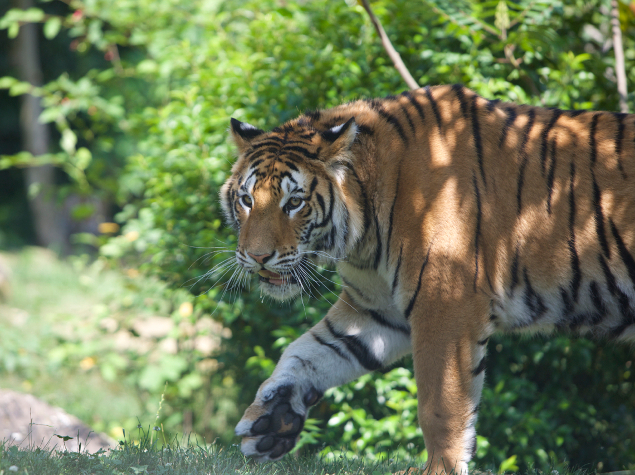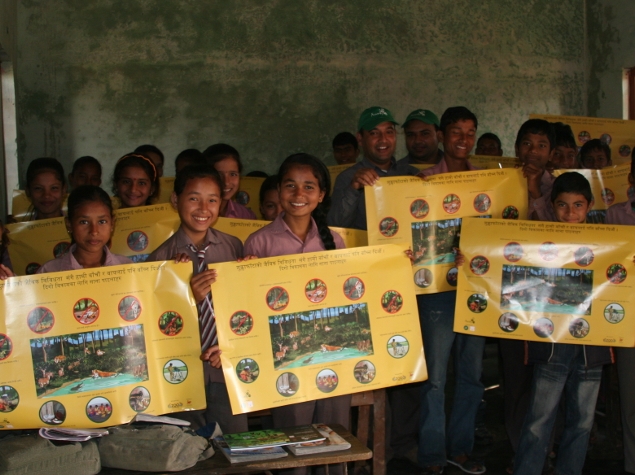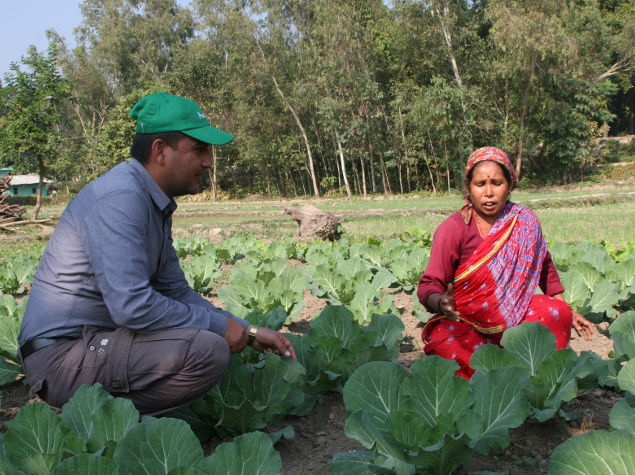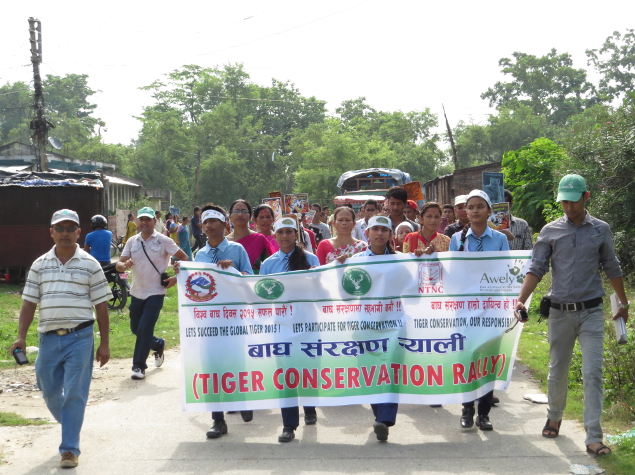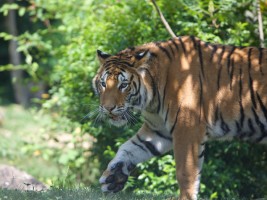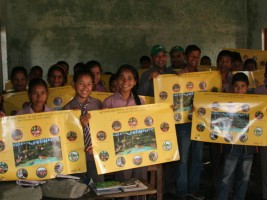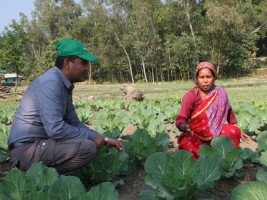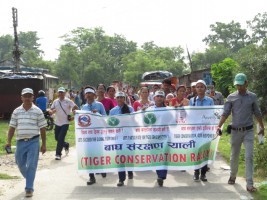Improving habitat of the tiger and its prey species in Suklaphanta Wildlife Reserve by reducing livestock grazing
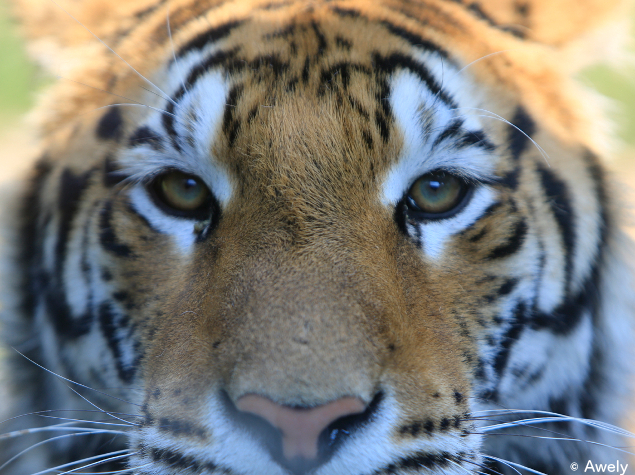
Suklaphanta Wildlife Reserve (SWR) is a protected area in the far western part of Nepal. It shares its boundaries with two tiger reserves: the Pilibhit Tiger Reserve and Dudhwa Tiger Reserve. SWR possesses the largest grassland (“phantas”) in Nepal, which is both of national and international importance for globally threatened species. A total of 46 species of mammals has been reliably reported from here (18 are protected under CITES), including the following globally threatened species: Bengal tiger, Asian elephant, hispid hare, smooth-coated otter, nilgai, swamp deer and Indian rhinoceros. The SWR population of swamp deers is the largest of the world (estimated between 1,500 to 2,000 individuals in 1999).
Awely launched in 2010 the Awely Green Caps program in SWR in collaboration with the National Trust for Nature Conservation. This program has been running a conservation oriented awareness programme among the local community people by selecting Users’ Groups of the buffer-zone, which strongly depend on the forest resources. Since the beginning, conservation rallies are organized annually on the occasion of the Global Tiger Day, to create awareness about the importance of tiger conservation. Further, an education programme for local communities as well as schools has been set up. Trainings on sustainable livelihood development have been taking place within ten User Groups up to date. Since the Awely Green Caps Programme is active outside of the reserve, positive changes within SWR have been observed. The status of the tiger in Nepal, published by the Government of Nepal in mid-2013, indicates an increase of 21% of the tiger population in the reserve.
Domestic livestock grazing is one of the key threats, with fodder and fuel-wood collection, affecting this reserve. The intensive grazing destroys, or extensively modifies the natural habitats and leads to land degradation and loss of biodiversity. Between 7000 to 8000 cattles (mainly cows, oxen and buffaloes) are sent into the reserve for grazing. These animals are kept for traditional reasons, for the work in the fields or for milk production. However the milk production is low and cross-breeding has been done to improve the yield. These new breeds are demanding better care and feeding.
As a part of the Green Caps program, the main objectives of this project is to reduce illegal livestock grazing pressure within SWR through converting free ranging cows into stall-fed cows, developing grass nurseries and spreading community awareness.
The secondary objectives are to reduce the grass collection within SWR, to create a good socioenvironment for conservation activities and to monitor the impact of anthropogenic factors like grazing within the tiger habitat.
Along with the propagation of in-stall feeding of cows an intensive education campaign on this issue will be launched by the project. Most of our target groups are not aware that cattle grazing within the reserve is highly problematic. Further, livestock-keepers will be supported to produce feeding material for cows on their farms as well as on community premises. Accurate monitoring of all community based project activities is a special feature of Awely’s programme implementation. The monitoring and analysis of the anthropogenic pressure on the tiger habitat will be substantial for the evaluation of project effects on the tiger habitat.
Through this proposed project, existing Awely Green Cap activities around SWR will be scaled up.
Final Report Summary:
Significant milestones were achieved through this project:
- 400 breeders accepted to transit from free-ranging cows to stall-fed cows. Similarly, in order to improve the quality of the species, a campaign to increase bovine insemination and vaccination has been put in place. In order to reduce grazing in the park, Awely and other partner organizations expanded an existing nursery, opened a new one and distributed 600 kg of grains and 16,000 fodder trees to breeders engaged in the project.
- The project also achieved significant results with regards to awareness campaigns. Awely spearheaded a meeting between journalists and beneficiaries and an exhibition on the importance of protecting wildlife. 600 students took part in a sensitisation training.
- A one-day mobile clinique has been opened in March 2016 where 400 patients were taken care of.
- Improvements have also been made with regards to the tracking of human footprint on the local environment through regular photographic measures of the area.

